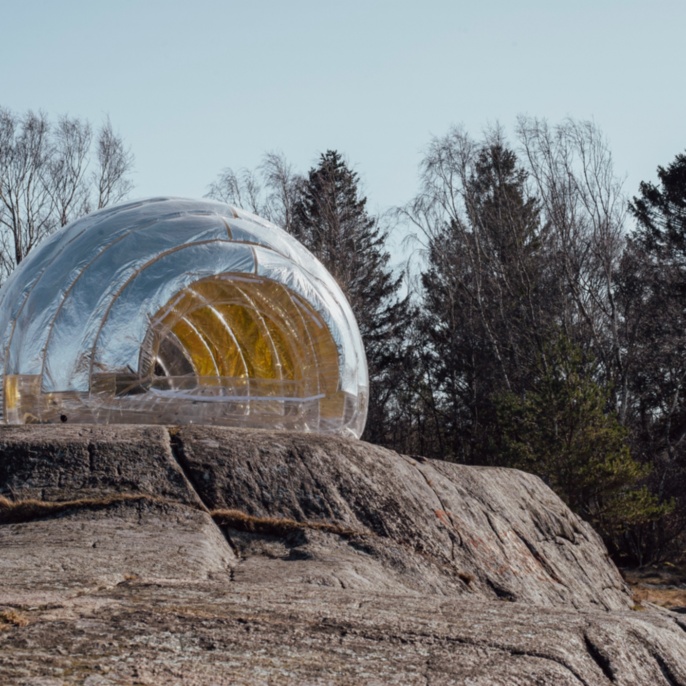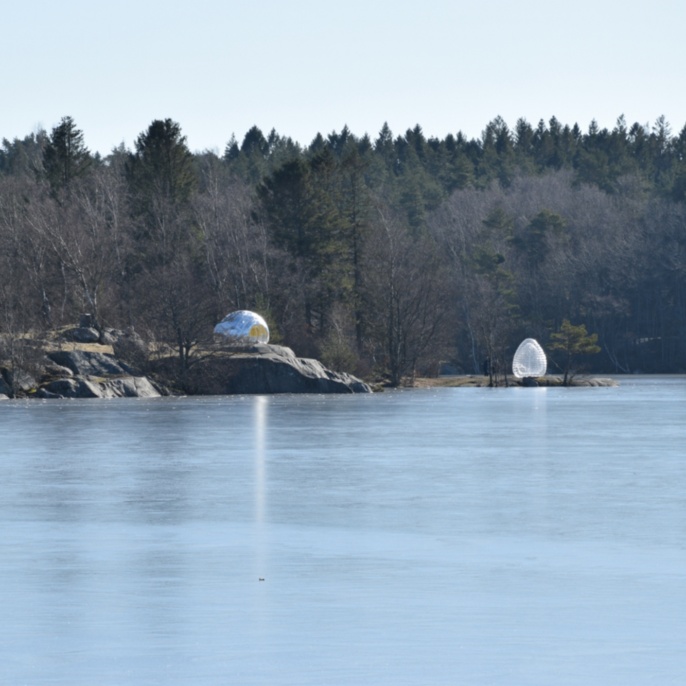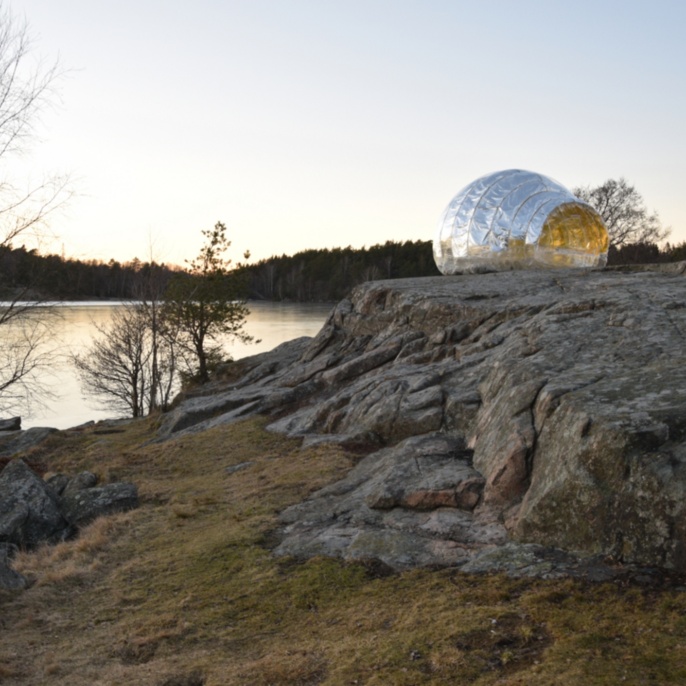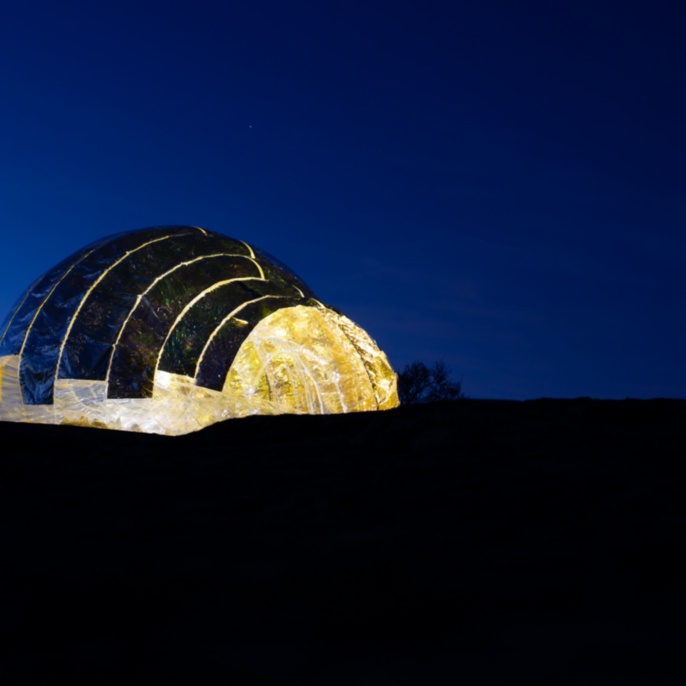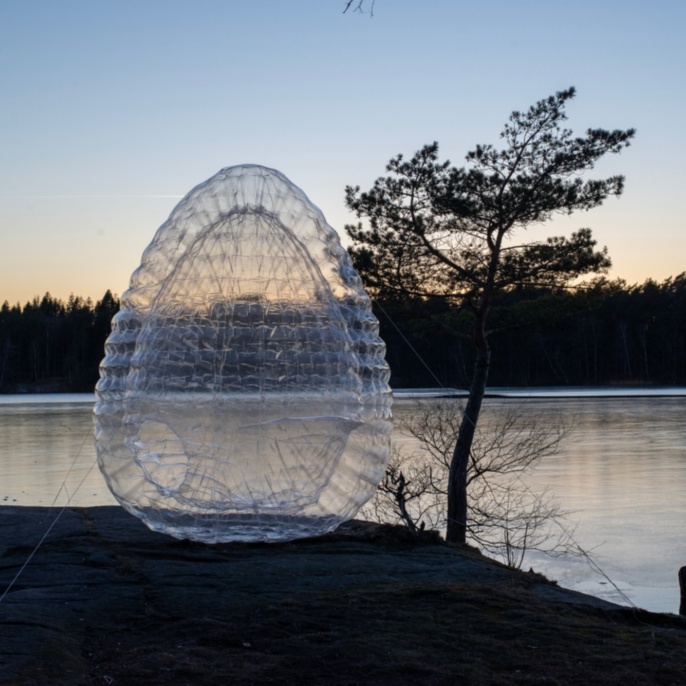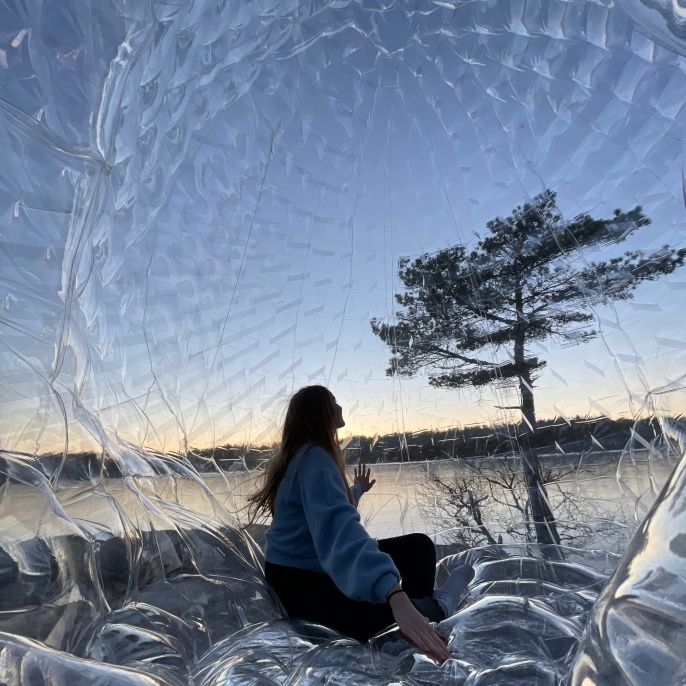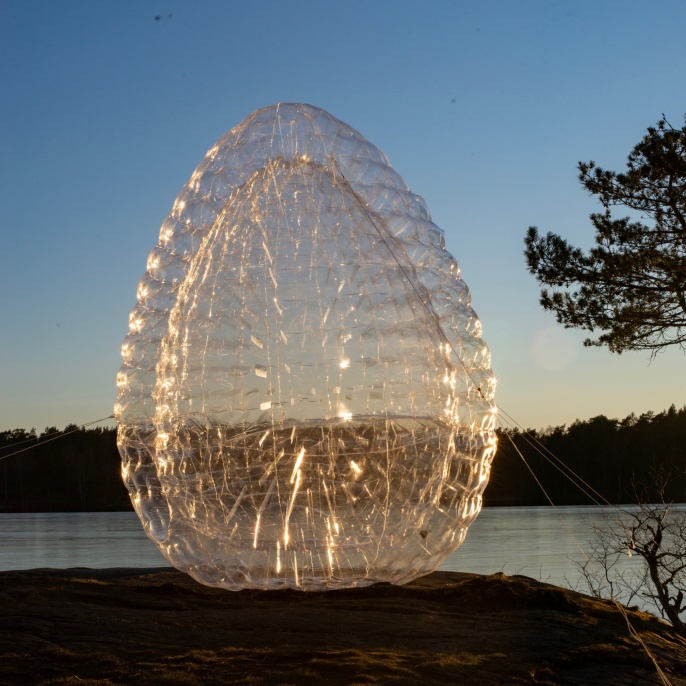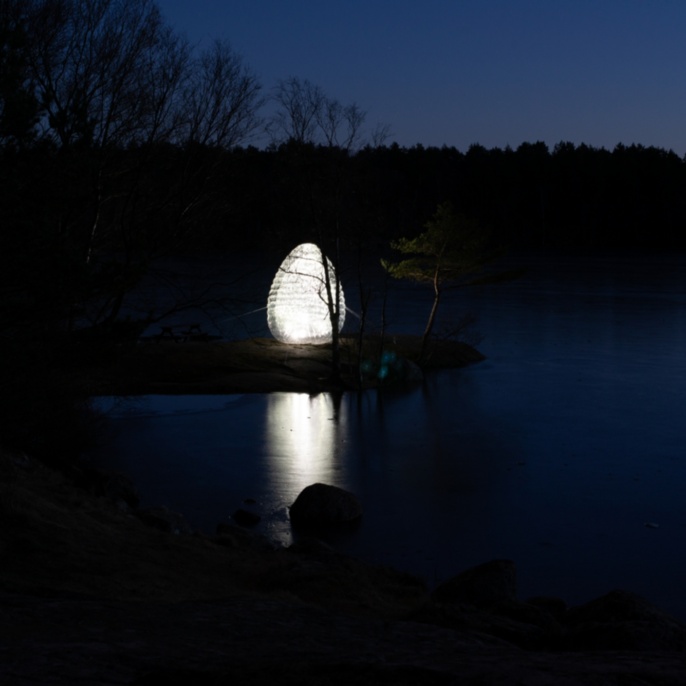We encounter pneumatic structures everywhere in our everyday lives. Whether in a bicycle tyre, a football or an air mattress. They can also be found in architecture in the form of air domes and façade systems. Pneumatic structures are becoming increasingly attractive as an alternative to solid materials such as concrete. They offer low material consumption, lower CO2 consumption and flexible usability. Air becomes a constructive material.
As part of the International Design programme, we deal with Sweden and the large temperature differences that prevail there, as well as the complex transport of building materials. In this context, the students are faced with the task of designing a transportable, insulated dwelling that is constructed using only foils, ropes, straps and compressed air. The aim is to minimise the use of materials. The pavilion to be designed should be more durable than a tent, more flexible than a house and more transportable than a caravan. The structure is to be designed for the cold and harsh climate of northern Sweden, have a floor area of approx. 40 m2 and be lit by daylight.


